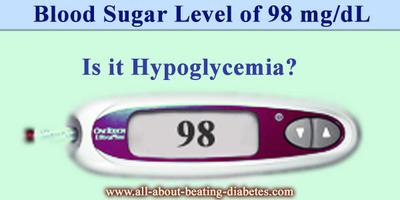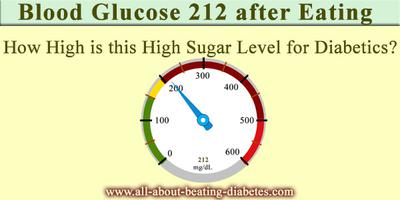- Home
- blood sugar levels
- Polymyalgia Rheumatica Diabetic
Polymyalgia Rheumatica in Insulin Therapy Diabetics

What does 98 on a blood sugar level mean?
QUESTION:
I have blood sugar level 98 2nd hour PP. I became unconscious while driving a scooter yesterday.
Please advise was that due to low blood sugar?
Ram
ANSWER:
Hi Ram,
What happened to you is a quick lowering of blood sugar below 98 (I think it was lower than 50). If you are a diabetic, the quick lowering of blood glucose is very dangerous because can put a patient at risk (the same thing that happened to you).
To safeguard your well-being, adopting a more vigilant approach is crucial. Here are some recommendations:
- Maintain a Regular Meal Schedule:
Ensure you have meals at consistent intervals to prevent sudden fluctuations in blood sugar levels, whether hyper or hypoglycemia.
- Monitor Diabetic Medications:
Record your blood sugar readings and share them with your doctor. This information will help your healthcare provider assess whether adjustments to your medication dosage are necessary.
- Carry a Sweet or Candy:
Always have a sweet or candy on hand to prevent a recurrence of unconsciousness. Familiarize yourself with the symptoms of hypoglycemia, as outlined here, to ensure timely intervention.
- Manage Stress and Physical Activity:
Be mindful that intense exercise, fatigue, or psychological stress can impact blood glucose levels. Learn effective coping mechanisms to prevent sudden drops.
- Driving Precautions:
Consult your doctor about specific precautions to take while driving, whether it's a scooter or a car. This proactive measure can help avert potential problems on the road.
- Wear a Diabetes Alert:
Carry a bracelet or a card indicating your diabetes status. This will alert both medical and non-medical personnel to your condition, ensuring you receive appropriate assistance promptly.
By incorporating these measures into your daily routine, you can better manage your diabetes and minimize the risks associated with fluctuating blood sugar levels.
Remember, proactive self-care is key to maintaining your health and well-being.
I hope it helped. All the best!
Insulin Dependent Type 2 Diabetes & Polymyalgia Rheumatica

QUESTION:
Diagnosed because of eye problems, retinopathy, giant cell arteritis, polymyalgia rheumatica.
Hard to control blood sugar, injecting 4 times a day. Not moaning, just wonder why levels are still rising after insulin and not eating.
Thanks a mill, I'm 60 year old.
ANSWER:
Hi,
From your telling, I think your case is a bit complicated. However, I should have some data before giving an exact answer.
- Polymyalgia rheumatica (PMR) is a condition characterized by pain and stiffness in the bilateral shoulder and pelvic girdle, typically affecting older individuals.
This condition is responsive to glucocorticoids (GC), and PMR is notably a common reason for prolonged glucocorticoid treatment in community settings.
- Giant cell arteritis (GCA), also known as temporal arteritis, is an inflammatory disorder that affects the large and medium-sized arteries, particularly the temporal arteries located on the sides of the head. It is characterized by inflammation of the blood vessel walls, primarily involving the arteries around the temples.
GCA is most commonly diagnosed in individuals over the age of 50, and it is more prevalent in women than in men.
Common symptoms of giant cell arteritis include severe headache, tenderness over the temples, vision problems, jaw pain, and fatigue. In some cases, patients may experience flu-like symptoms, unintentional weight loss, and muscle aches.
The primary treatment for giant cell arteritis is typically high-dose corticosteroids, such as prednisone. These medications are effective in reducing inflammation and preventing complications.
In both cases PMR and GCA, corticosteroids are the most commonly prescribed medications. One of the side effects of these drugs is diabetes or impairing glucose metabolism.
Therefore, if you are taking any corticosteroids to control your PMR and GCA, this can explain why you are not able to control your diabetes although you are injecting insulin 4 times a day and not eating.
Managing diabetes while taking corticosteroids can be challenging, as corticosteroids can affect blood sugar levels.
You can discuss this with your doctor to see what the right steps to follow are in order to control diabetes and get PR treated at the same time.
- Another key point is your AGE. It is also another factor that can contribute in an uncontrollable diabetes. If this is the case, you should be patient and follow the right lifestyle and diet changes to get your desired results soon.
Close and regular follow ups with your doctor will help manage your blood sugar levels while treating polymyalgia rheumatica and giant cell arteritis.
All the best!
Blood Glucose Level after Eating of 212

QUESTION:
What does a blood glucose level after eating of 212 mean? Is that high for diabetes?
ANSWER:
Hi,
Normally, there is an elevation in the blood glucose level after eating. For that reason, there exists a precise schedule for the blood glucose values before and after eating.
For example, if you get up at 7:30, your glucose level is going to in normal ranges 70-100mg/dl.
If you eat something at 8:00, normally, your glucose will rise to values of 200-250mg/dl in a period of 2 hours after having a meal.
Of course, there are individual differences in these values and lot of test which have to be estimated in purpose to confirm or reject diabetes as diagnosis.
As you probably know, there are a lot of hormones which are controlling the amount of blood sugar in plasma. Therefore, when you blood glucose level is low, certain hormones like glucagon and adrenalin are increasing it by stimulating the hydrolysis of glycogen (polymer of glucose stored mainly in the liver).
If your blood glucose is high, the insulin secretion is increased consequently. The bad thing in here is that insulin is the only hormone which is reducing the amount of blood sugar in plasma.
Furthermore, the organism requires time for the insulin secretion and the insulin needs time to lower your blood glucose level. That is the reason why you have an elevation of the blood glucose in a period of two hours after having a meal.
That is also the reason why you are not supposed to eat before the blood test.
If there was some kind of abnormality in your glucose metabolism, the blood sugar in 7:30 will be about 200-250 and, after having a meal it is going to be 300 mg/dl.
In purpose to be sure that you are not having diabetes, there is a test for impaired glucose tolerance.
This test is providing you a diagram of your blood glucose values during the whole day. This will make you see that everything is ok with your glucose metabolism. This test is estimated in every hospital by every doctor who is endocrinologist.
Hope it helped!
|
Answered by Dr.Albana Greca Sejdini, Md, MMedSc Medically reviewed by Dr.Ruden Cakoni, MD, Endocrinologist |
Last reviewed 01/15/2024 |
Your second block of text...






New! Comments
Ask A question Or Leave a comment.